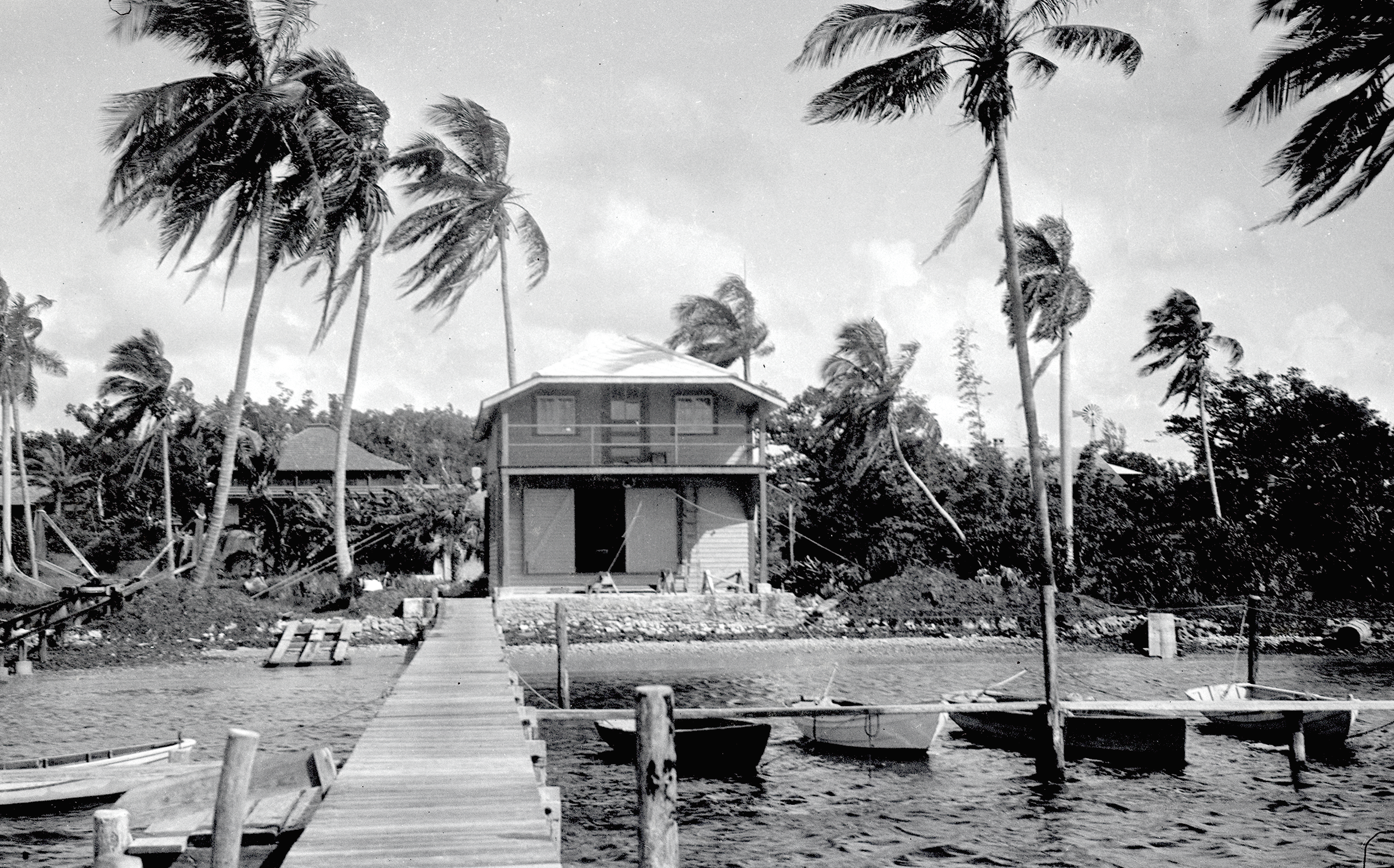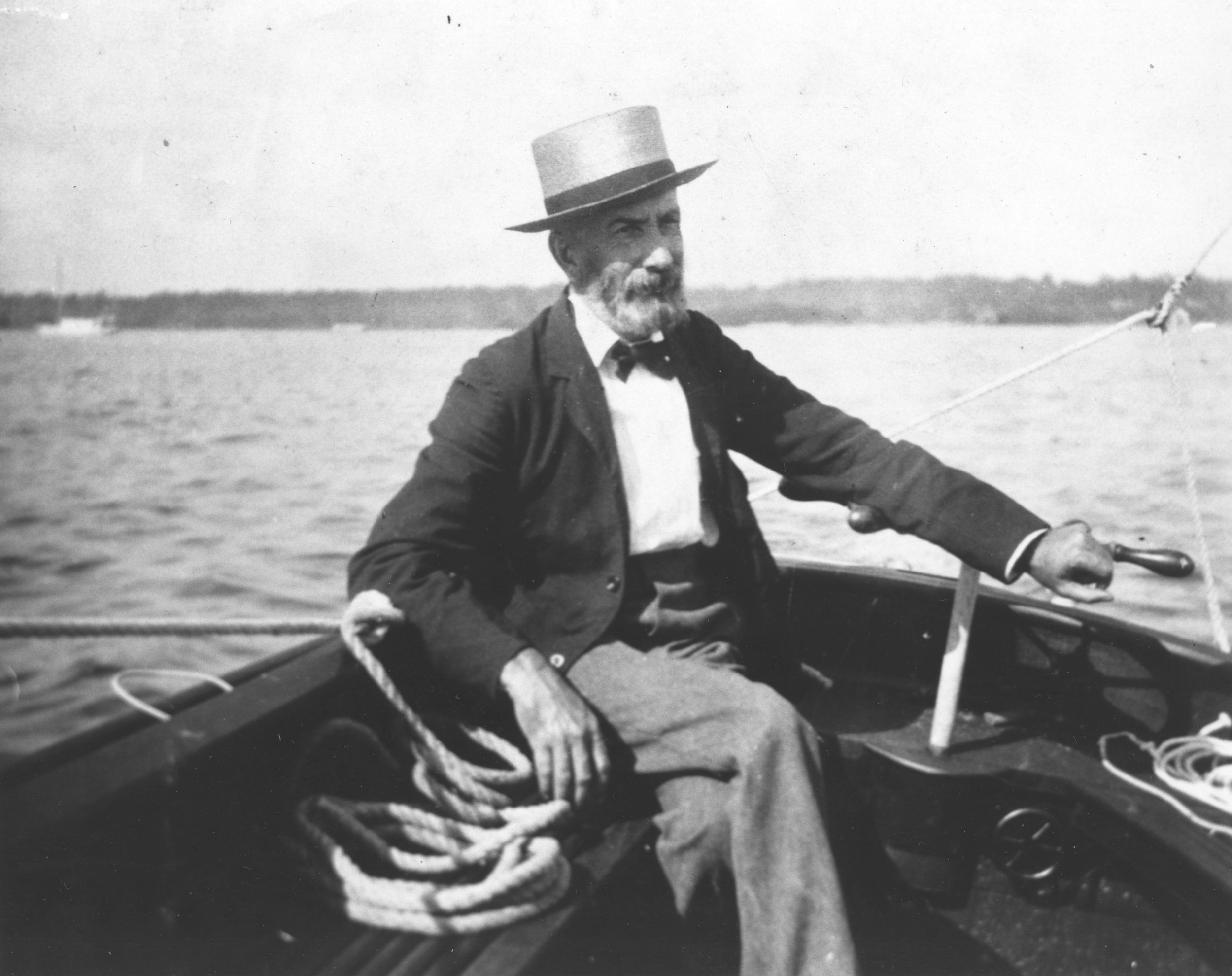Preserving Miami’s Best Backyard
The Barnacle, built in 1891, offers a glimpse of Old Florida during The Era of the Bay. A walk into the park through its tropical hardwood hammock invites each guest to imagine Miami’s original landscape in the late 19th and early 20th Centuries.

History of The Barnacle
Situated on the shore of Biscayne Bay, The Barnacle was the late 19th century home of Ralph Middleton Munroe, one of Coconut Grove’s most interesting and influential pioneers. The Florida Park Service acquired the remaining five acres of Munroe’s original 40-acre home site from his descendants in 1973.
Ralph Munroe first visited South Florida in 1877 while on vacation from New York. His next visit to the area was not as pleasant. In 1881, doctors told Munroe that his wife, Eva, had contracted tuberculosis and indicated a radical change of climate was the best and only hope. Munroe immediately remembered the beautiful Biscayne Bay and at once prepared to take her there. Despite his efforts, illness took its toll. Eva passed away at their camp on the Miami River. Munroe was then faced with the news of their infant daughter’s death upon his arrival back in New York.
Munroe returned to South Florida in 1882 to visit his wife’s grave and encouraged early Coconut Grove settlers, Charles and Isabella Peacock, to establish a small hotel to support seasonal visitors to the area. First known as the Bay View Villa, the hotel became the Peacock Inn and went on to have a long and profitable history.
Ralph Munroe purchased 40 acres of bayfront land in 1886 for $400 along with one of his sailboats, KINGFISH, valued at an additional $400. His two-story boathouse, built in 1887, provided a workshop downstairs and living space above. Frequent visitors made the boathouse impractical as a residence, so Munroe designed a bungalow for himself on the ridge above and began living there in 1891. The house, a one-story structure, was raised off the ground on wood pilings and Munroe came to call his home “The Barnacle,” presumably because it resembled one. It remained a bungalow until more space was needed in 1908. At that time the whole structure, as it stood, was lifted and a new first-floor inserted below. The Barnacle survived the disastrous 1926 hurricane and Hurricane Andrew in 1992 with only minimal damage.
On a return trip from visiting family in New York, Ralph met lovely, young Miss Jessie Wirth and they married in 1895. A daughter Patty was born in 1900, and a son Wirth in 1902. To support his family, Munroe worked as a salvager/wrecker but his true passion was yacht design. A proponent of shallow-draft, centerboard yachts, Munroe engaged in the friendly, sometimes heated debate about the superiority and seaworthiness of his design versus the popular fixed-keel sailboat designs of his contemporary Nathaniel Herreshoff of Bristol, Rhode Island (and others). Over the years, Munroe and Herreshoff shared mutual respect and friendship, culminating in Herreshoff wintering with his wife in a cottage that Munroe built for him next to the Barnacle boathouse.
Boats were the major form of transportation in the early days and yachting was becoming a popular sport. Many South Floridians commissioned Munroe to design their yachts, and, in his lifetime, he drew plans for 56 different boats. In 1887, a group of residents formed the Biscayne Bay Yacht Club, electing Munroe as Commodore, the title he held for 22 years. A replica of Munroe’s 28-foot modified sharpie, EGRET, is now moored offshore. A man with diverse interests, he was also a photographer, author, and environmental activist. Ralph lived in Coconut Grove until his death at the age of 82.
The road into this historic site from the busy Main Highway passes through a forest of tropical hardwood hammock. In the 1920’s it was an example of the original landscape within the limits of Miami. Today, it is one of the last remnants of the once vast “Miami Hammock.” Commodore Munroe preserved the original hammock between the road and The Barnacle, cutting out only a winding buggy trail barely wide enough for one vehicle. As a result, the forest contains many old trees, and left in its natural state, The Barnacle appears much as it did in Munroe’s day.
As a seaman, naturalist, and photographer, Commodore Munroe was a man who cherished the natural world around him. It is a fitting legacy that we too can share at The Barnacle Historic State Park. Enjoy sitting in the rocking chairs on the spacious porch used as a gathering place or on a bench under a tree for solitude. Better yet, become a volunteer and/or join The Barnacle Society to help preserve this historic treasure.



